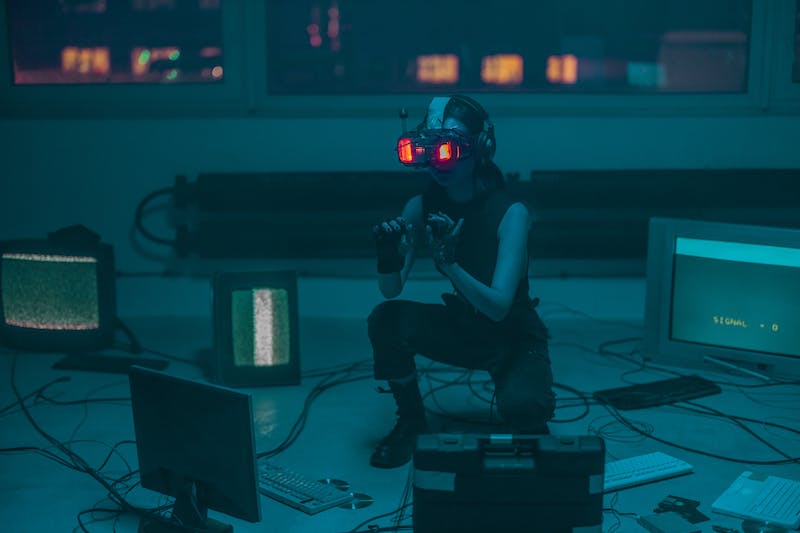In the past ten years, virtual reality (VR) technology has come a long way, giving users a more immersive experience that can take them to virtual worlds. With the development of VR headsets, it has become possible to experience these digital environments with all our senses. However, despite the numerous advantages of VR technology, there are also several disadvantages that users should be aware of before diving in.
In today’s Cuban VR post, we’ll explore some of the main drawbacks of VR headsets.
1. Discomfort and Motion Sickness
One of the most common problems with VR headsets is discomfort and motion sickness. When using VR technology, the user’s body may feel like it’s moving while they’re standing still, which can cause nausea, dizziness, and other physical symptoms. This is especially true when the VR headset is not calibrated correctly and the motion of the virtual environment is not in sync with the user’s actual movements. Additionally, wearing the VR headset for extended periods can cause discomfort and fatigue as it places pressure on the face and head.
2. Cost
Another significant disadvantage of VR headsets is their cost. High-end VR headsets, such as the Oculus Rift or HTC Vive, can cost hundreds of dollars, making them an expensive investment for many consumers. Additionally, users must have a powerful computer system to run these devices, which can add to the overall cost. Even mid-range VR headsets, such as the PlayStation VR, can be costly, especially when considering the cost of games and other VR accessories.
3. Limited Mobility
VR headsets also limit the user’s mobility, as they require the user to remain stationary while wearing the device. This can be especially frustrating for users who want to move around in the virtual environment but are unable to do so. Some VR headsets, such as the Oculus Quest, offer limited mobility by allowing users to move around in a small, designated space, but this still restricts movement to a limited area.
4. Social Isolation
Another significant disadvantage of VR headsets is the potential for social isolation. When wearing a VR headset, the user is cut off from the real world, making it difficult to interact with others. This can be especially problematic for users who spend long periods in virtual environments, as they may begin to feel disconnected from the real world and their social connections.
5. Health Concerns
Finally, there are also health concerns associated with the use of VR headsets. Studies have shown that prolonged use of VR headsets can cause eye strain, headaches, and another physical discomfort. Some experts are also worried about what long-term effects using VR technology might have on the brain and nervous system since the technology is still fairly new and not fully understood.
6. Technical Issues
Another disadvantage of VR headsets is the potential for technical issues. VR technology is still relatively new, and there may be compatibility issues with certain hardware or software. Additionally, glitches and bugs can occur, causing the device to malfunction or crash. These technical issues can be frustrating for users and may require troubleshooting or repairs.
7. Accessibility
VR technology may not be available to everyone because it costs a lot to buy the hardware and software. VR technology may not be available to everyone because it costs a lot to buy the hardware and software. Additionally, some individuals may have disabilities or impairments that make it challenging or impossible to use a VR headset. This lack of accessibility can be a significant disadvantage for those who would benefit from the technology but cannot access it.
8. Content Limitations
Even though the amount of VR content is growing, there is still not as much to choose from as there is with traditional games or entertainment. Some VR experiences may also require extra payments or subscriptions, which can add to the cost. This lack of content and potential additional fees can be a significant disadvantage for users who want a wide variety of VR experiences without breaking the bank.
9. Social Stigma
Finally, there is still a social stigma associated with wearing a VR headset. Even though the technology is becoming more popular, some people may think that wearing a VR headset makes them feel alone or unfriendly. For people who want to use VR technology but are concerned about how others will perceive them, this social stigma may be a disadvantage.
Final thought
VR headsets give users an immersive experience that can take them to new worlds and improve their gaming and entertainment. But, as with any technology, there are some drawbacks that users should be aware of. These include discomfort and motion sickness, cost, limited mobility, social isolation, health concerns, technical issues, access, content limitations, and social stigma. By weighing the pros and cons and using VR technology in moderation, users can enjoy the benefits of the technology while minimizing the downsides.
